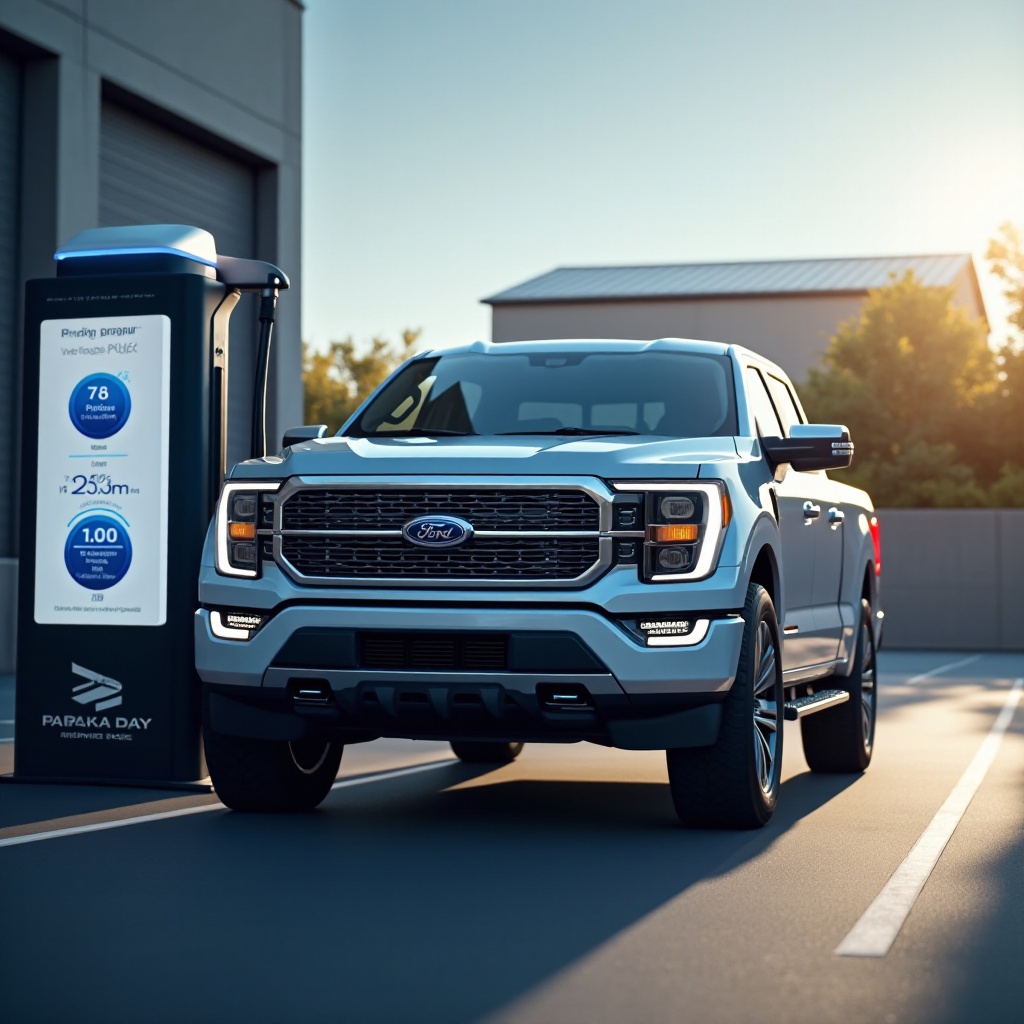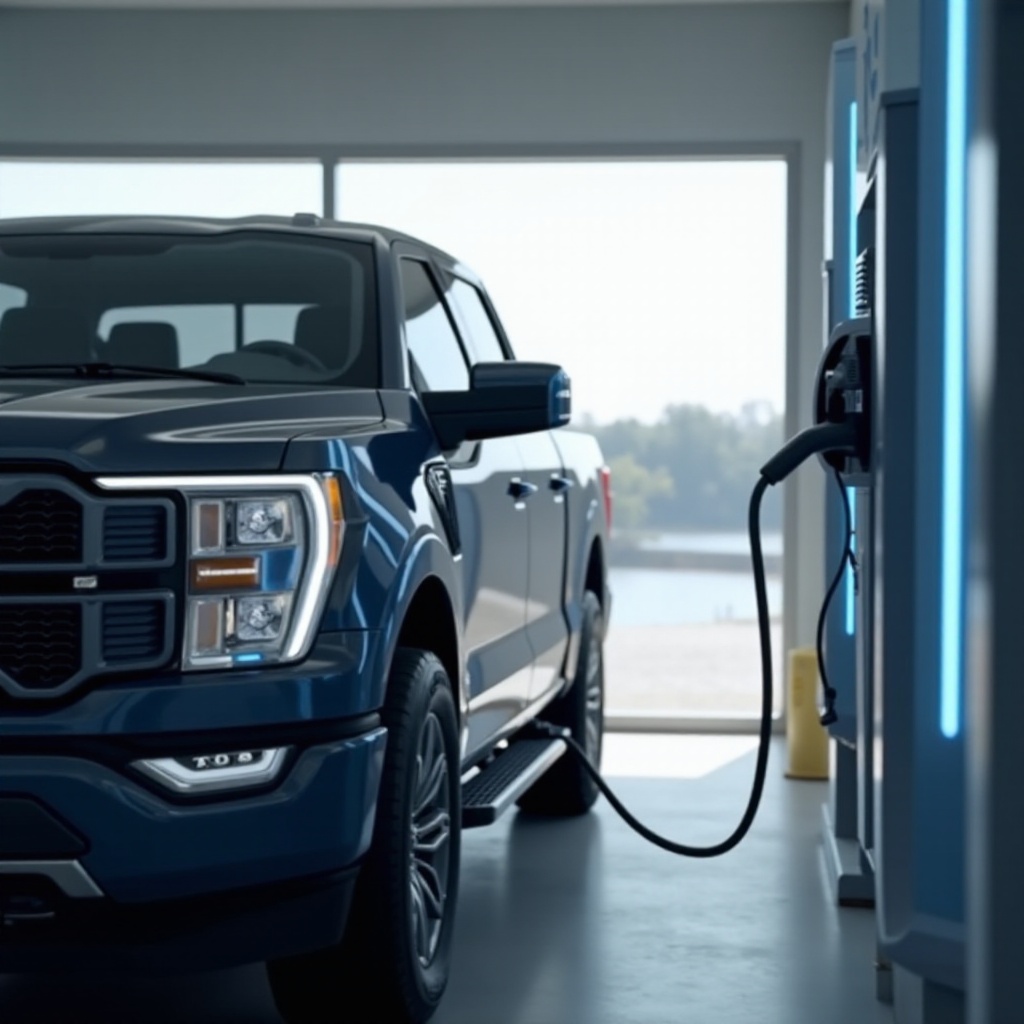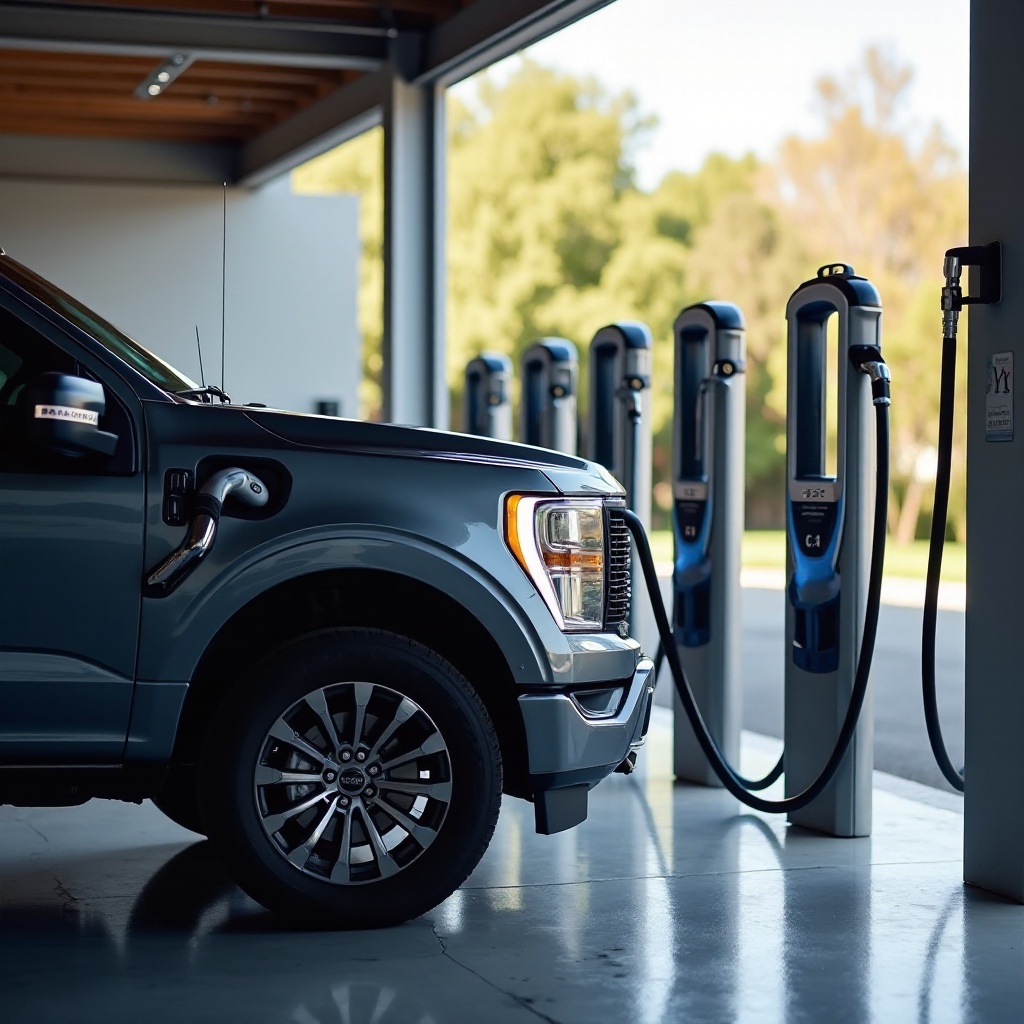Introduction
Owning a Ford F150 Lightning comes with an array of impressive features and electrifying experiences. However, understanding and maximizing its charging capabilities can significantly enhance the overall efficiency of your vehicle. By grasping the max charge rate and how to achieve it, you can save time, money, and get the most out of your electric vehicle (EV). This blog will unravel the complexities of the charging system, dive into the intricacies of achieving the best charging efficiency, and highlight the benefits of a higher max charge rate. Let’s get started with the basics.

The Basics of the F150 Lightning Charging System
The F150 Lightning, Ford’s all-electric truck, comes with a sophisticated charging system designed to cater to varied needs. The vehicle is built with an onboard charger that converts AC power from a charging station into the DC power needed to charge the battery. The charging system can work with different types of chargers, including Level 1 (120V), Level 2 (240V), and DC Fast Chargers.
- Level 1 Charging is the most basic form, utilizing a standard household outlet. While convenient, it offers the slowest charging rate.
- Level 2 Charging requires a dedicated 240V outlet, often installed in homes or available at commercial charging points, providing a significantly faster charging rate.
- DC Fast Charging stations are the quickest option, delivering direct current (DC) power directly to the battery, bypassing the onboard charger and rapidly increasing the state of charge.
Understanding these basics helps you make informed decisions about how and where to charge your F150 Lightning.
Understanding Max Charge Rate in F150 Lightning
The F150 Lightning boasts an impressive max charge rate, but what does this term entail? The maximum charge rate refers to the peak power that the battery can accept from the charger, measured in kilowatts (kW). For the F150 Lightning, the max charge rate can reach up to 150 kW when using a DC fast-charging station. This capability translates to approximately adding 54 miles of range in just 10 minutes, demonstrating the truck’s efficiency and convenience.
Factors such as battery temperature, current battery state of charge, and charger capacity can influence the actual charge rate. For instance, charging at higher battery levels or in extreme temperatures might lower the rate. Optimizing these conditions can help you approach the maximum charge rate more reliably.
Recognizing the vehicle’s potential in terms of charging speeds can help users plan their charging stops better, saving time and ensuring the vehicle is ready when needed.

Comparing Charging Rates: Home vs. Public Charging Stations
When charging the F150 Lightning, the choice between home and public charging stations plays a pivotal role in charging speed and convenience. To make the most of your charging strategy, let’s examine the nuances of each option.
Home Charging
- Level 1 Charger: With a standard 120V outlet, it delivers between 3-5 miles of range per hour. Although it’s slow, it might suffice for overnight charging or low daily mileage needs.
- Level 2 Charger: Using a 240V outlet, this setup can provide between 20-30 miles of range per hour. It requires professional installation but offers a much quicker turnaround for a full charge.
Public Charging
Public charging stations offer a varied mix, often seen at workplaces, shopping centers, or dedicated charging hubs:
1. Level 2 Public Chargers: These are similar to home Level 2 setups but can offer slightly faster rates due to higher amperage, providing around 25-30 miles of range per hour.
2. DC Fast Chargers: These are the pinnacle with the F150 Lightning capable of handling up to 150 kW. At this rate, it’s possible to charge from 15% to 80% in about 41 minutes.
Balancing home and public charging sessions can optimize convenience. Frequent short trips may be efficiently supported by home charging, while longer journeys may benefit from the rapid replenishment available at DC fast chargers.

How to Achieve the Best Charging Efficiency
To ensure your F150 Lightning charges efficiently, follow these key strategies:
- Temperature Management: Charge in moderate temperatures wherever possible. Extreme cold or heat can slow the charging process.
- Optimal Battery Level: Attempt to charge when the battery is below 80% and avoid letting it drop below 15% frequently. This can optimize charging speeds.
- Use Scheduled Charging: Set your vehicle to charge during off-peak electricity hours if possible. This not only saves money but can sometimes align with times when the grid is less strained, leading to more efficient charging speeds.
- Regular Maintenance: Ensure your home charging setup, and the vehicle’s charging ports are in good condition. Regular checks and maintenance can prevent any issues that might slow the charging process.
By implementing these strategies, you can benefit from the max charge rate more frequently and reliably.
Benefits of Higher Max Charge Rate in F150 Lightning
A higher max charge rate presents numerous benefits:
– Time Efficiency: Faster charging translates to less downtime, keeping the vehicle ready for use.
– Enhanced Utilization: The ability to quickly top up allows for more flexible and extended use, especially useful for long trips.
– Cost Savings: Efficient use of high-speed public chargers can reduce the need for longer, slower charges, potentially saving on costs related to charging durations and electricity fees.
By understanding and utilizing the high max charge rate, users can fully leverage their vehicle’s potential while enjoying these significant benefits.
Conclusion
Maximizing the F150 Lightning’s charging efficiency stems from understanding its charging system, exploiting the maximum charge rate, and knowing when and where to charge. The comparative analysis between home and public charging options offers flexibility and insight into managing your energy needs efficiently. By maintaining optimal charging conditions and regular maintenance, your F150 Lightning can remain a reliable and efficient mode of transport.
Frequently Asked Questions
What is the maximum charging rate for the Ford F150 Lightning?
The maximum charging rate for the Ford F150 Lightning is 150 kW with a DC fast charger, providing substantial speed in replenishing the battery.
How long does it take to fully charge an F150 Lightning?
A full charge using a Level 2 home charger can take around 10-13 hours. Utilizing a DC fast charger, you can go from 15% to 80% in approximately 41 minutes.
Can I charge the F150 Lightning at home with a Level 1 charger?
Yes, you can charge the F150 Lightning at home with a Level 1 charger, but it is the slowest method, adding only about 3-5 miles of range per hour.
